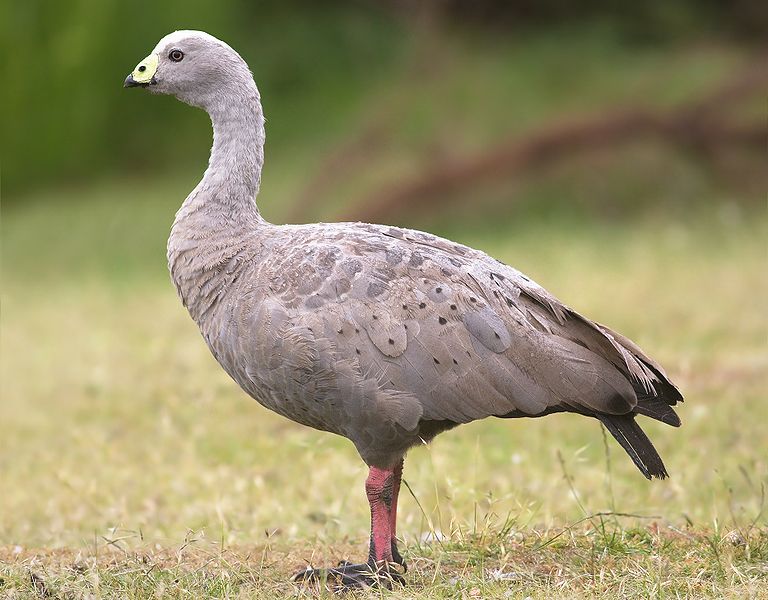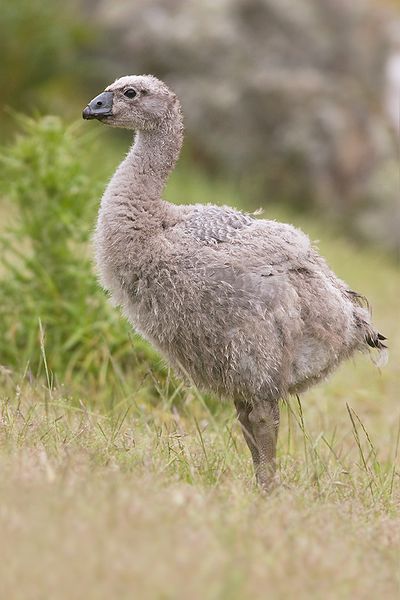Colours
Distinguishing features
These are bulky geese and their almost uniformly grey plumage, bearing rounded black spots, is unique. The tail and flight feathers are blackish and the legs are pink with black feet. The short, decurved black bill and green cere gives it a very peculiar expression. (Wikipedia)
Size
- From 75 cm to 100 cm (Length of specimen)
Weight
- From 3 kg to 7 kg
Wingspan
- From 150 cm to 190 cm
Synonyms
Interesting facts
- Their ability to drink salt or brackish water allows numbers of geese to remain on offshore islands all year round. (Wikipedia)
Distribution
Distribution and habitat preferences
It is a large goose resident in southern Australia. The species is named for Cape Barren Island, where specimens were first sighted by European explorers.
A previous decline in numbers appears to have been reversed as birds in the east at least have adapted to feeding on agricultural land. The breeding areas are grassy islands off the Australian coast, where this species nests on the ground in colonies. It bears captivity well, quite readily breeding in confinement if large enough paddocks are provided. (Wikipedia)
Diet
It feeds by grazing and rarely swims.
Web resources
References
- Simpson, K., N. Day and P. Trusler (2004). Field Guide to Birds of Australia: 7th Edition Penguin Group (Australia), Camberwell, Victoria.


